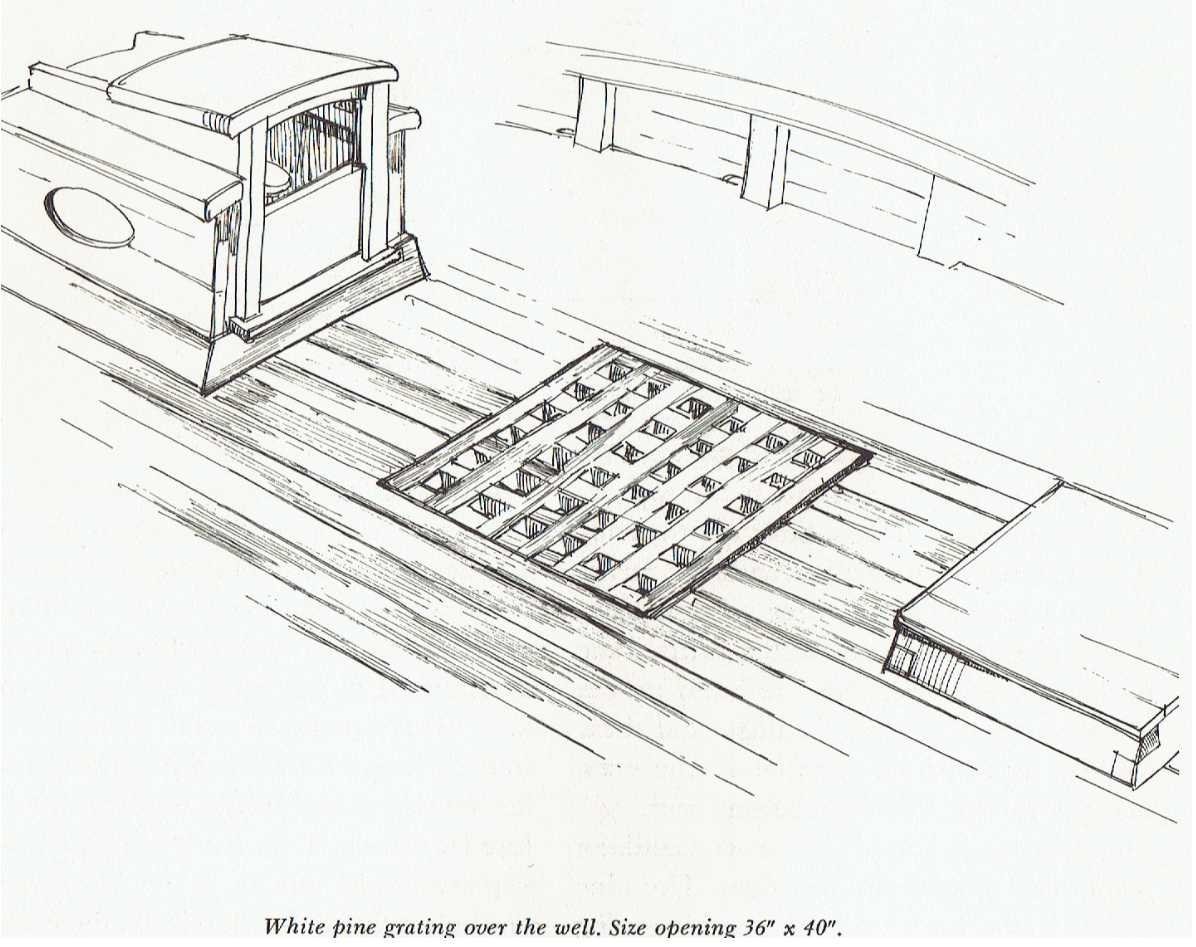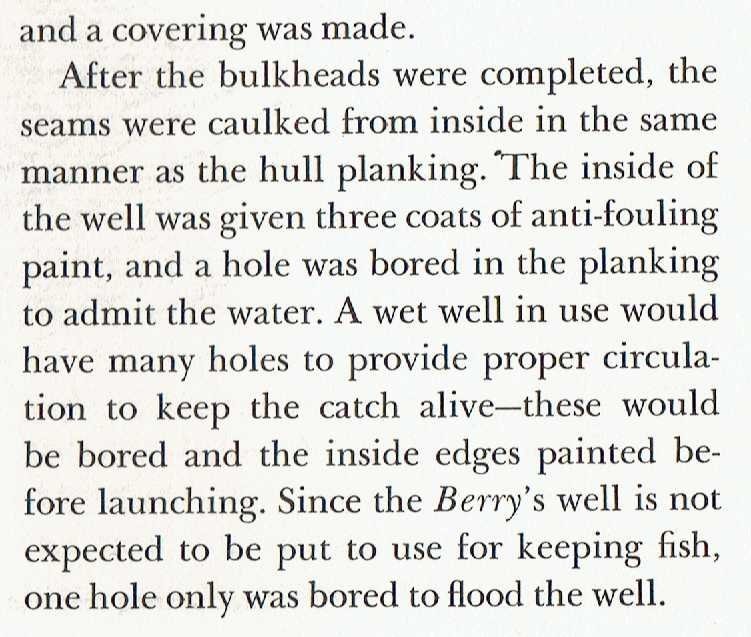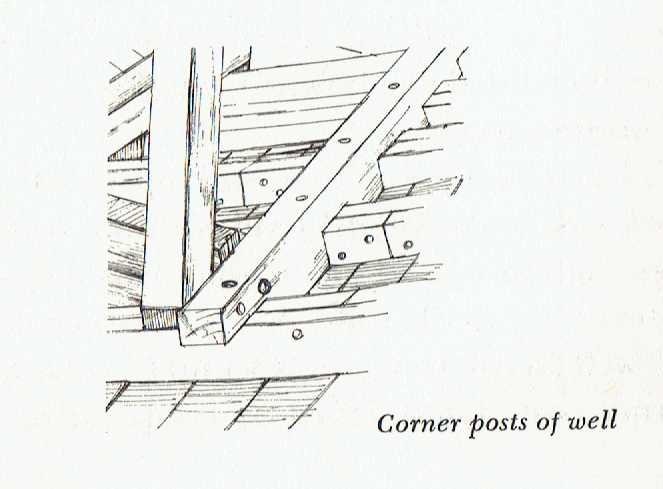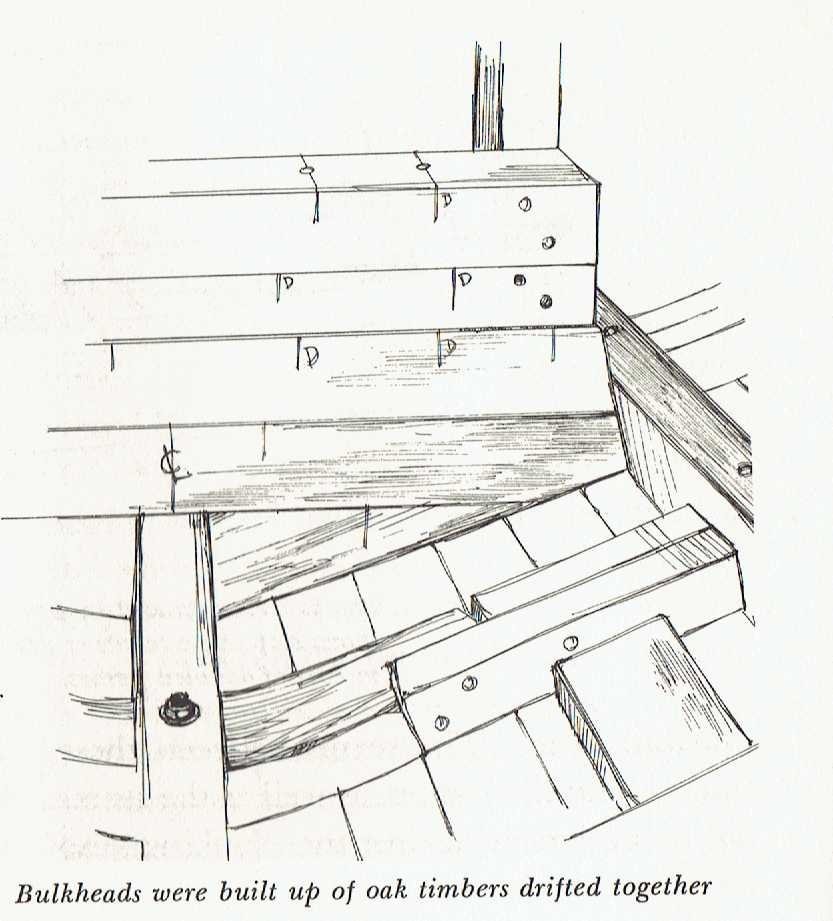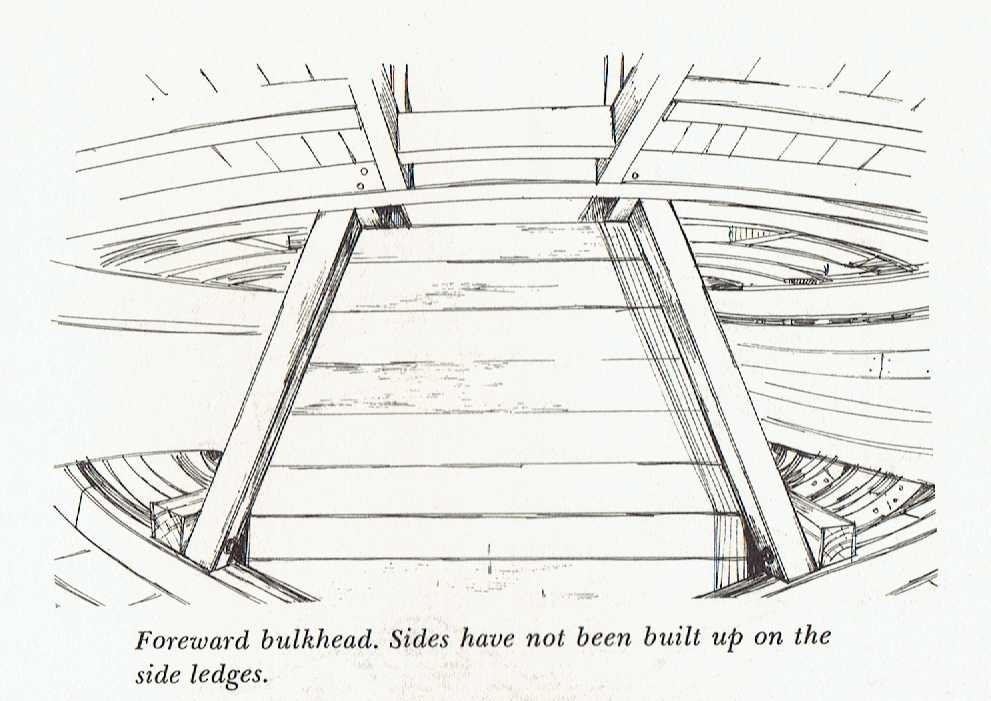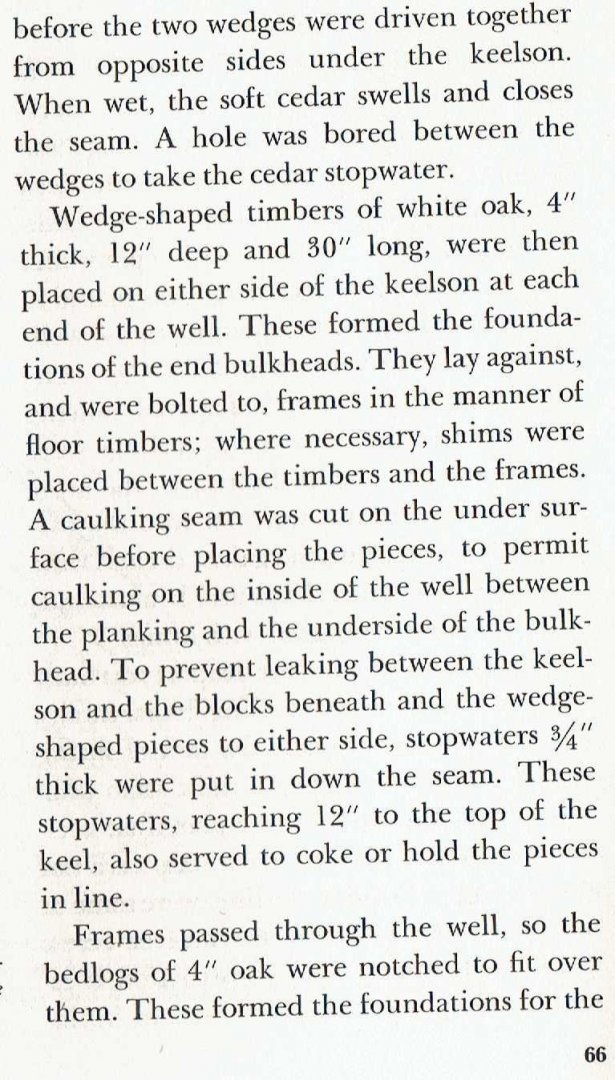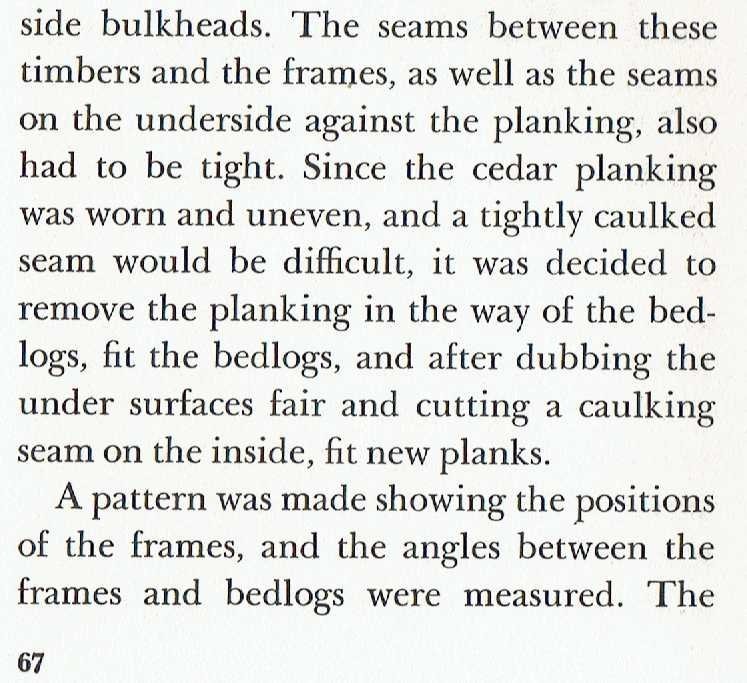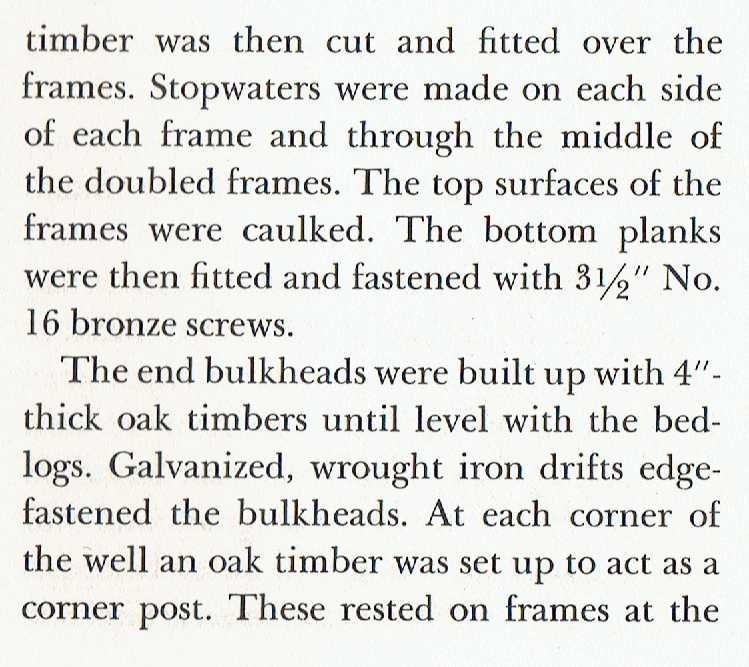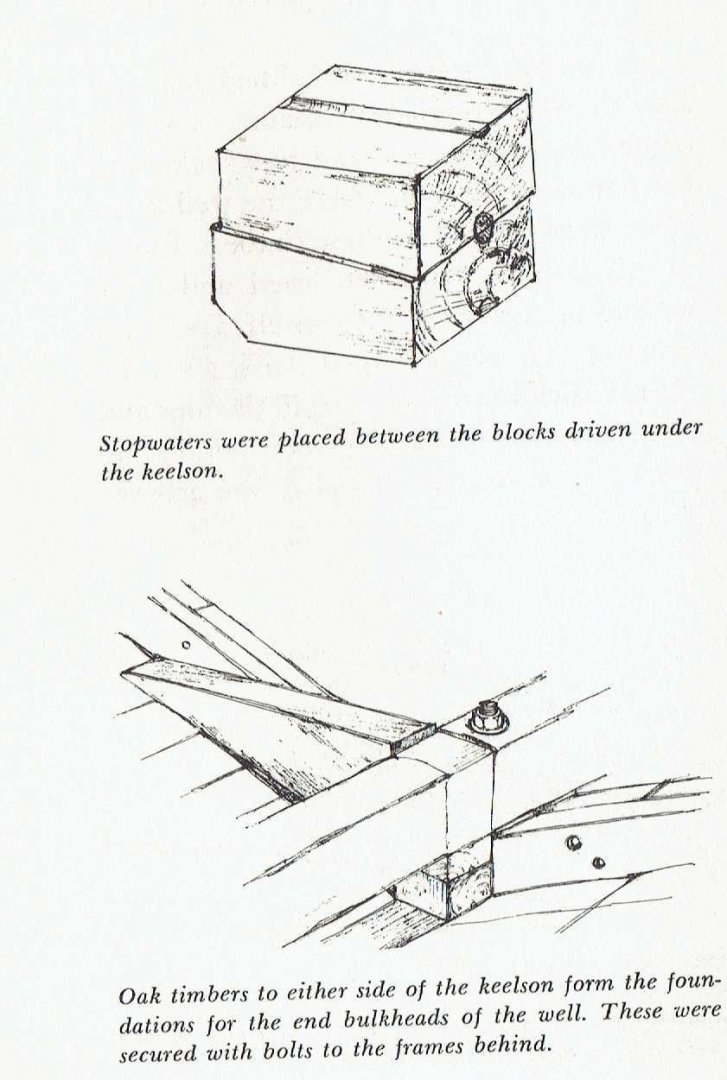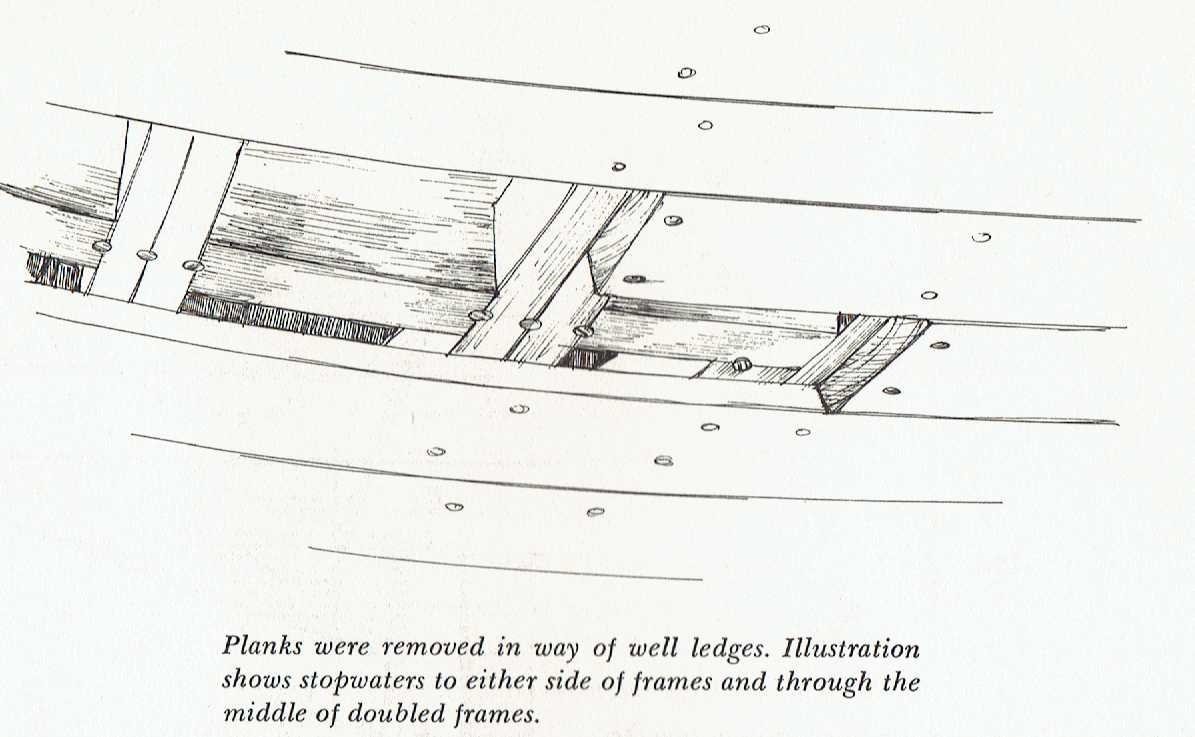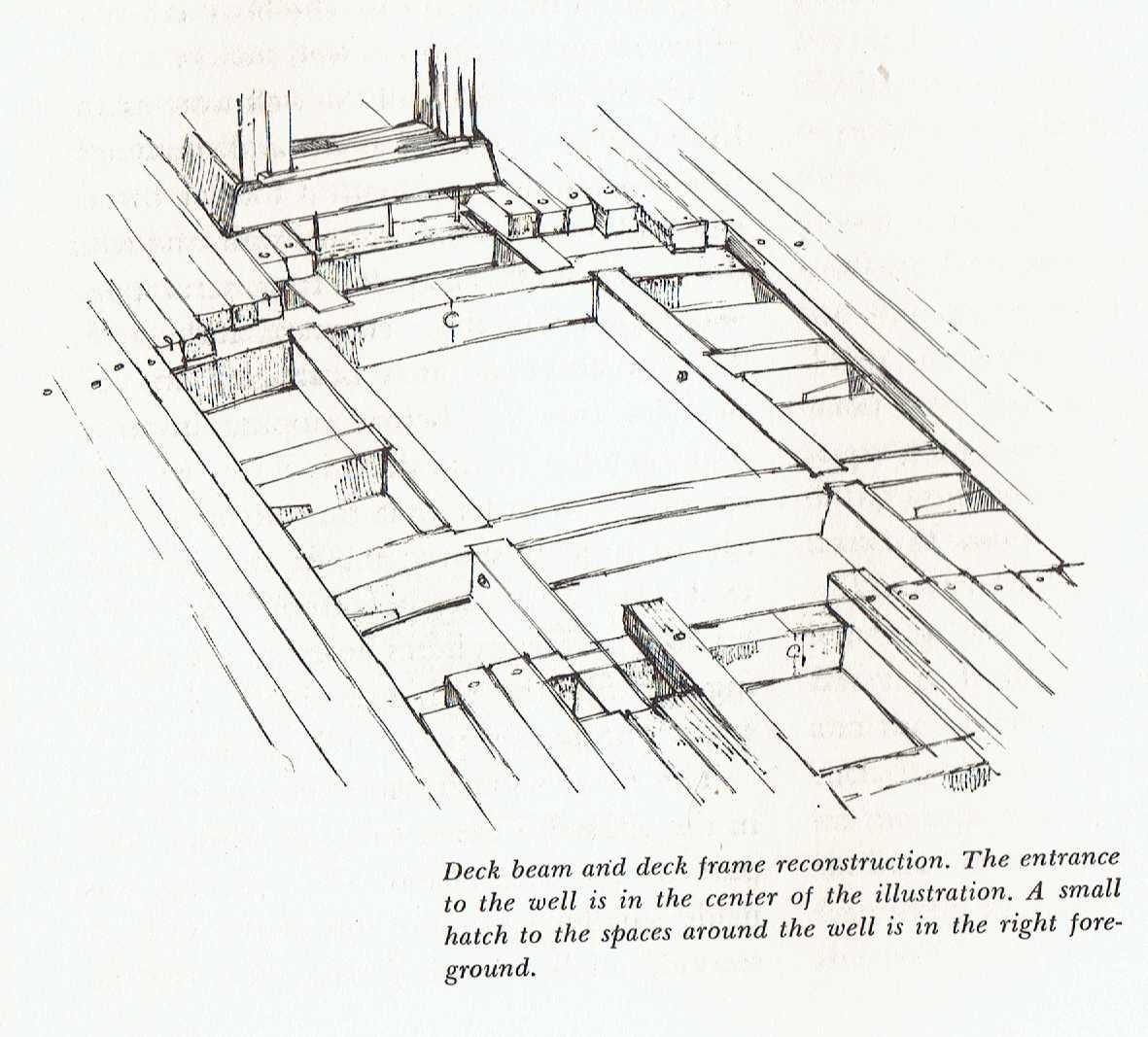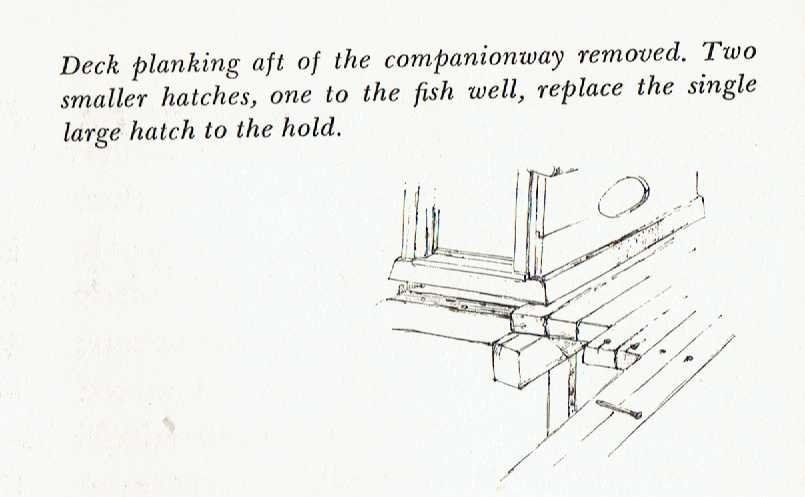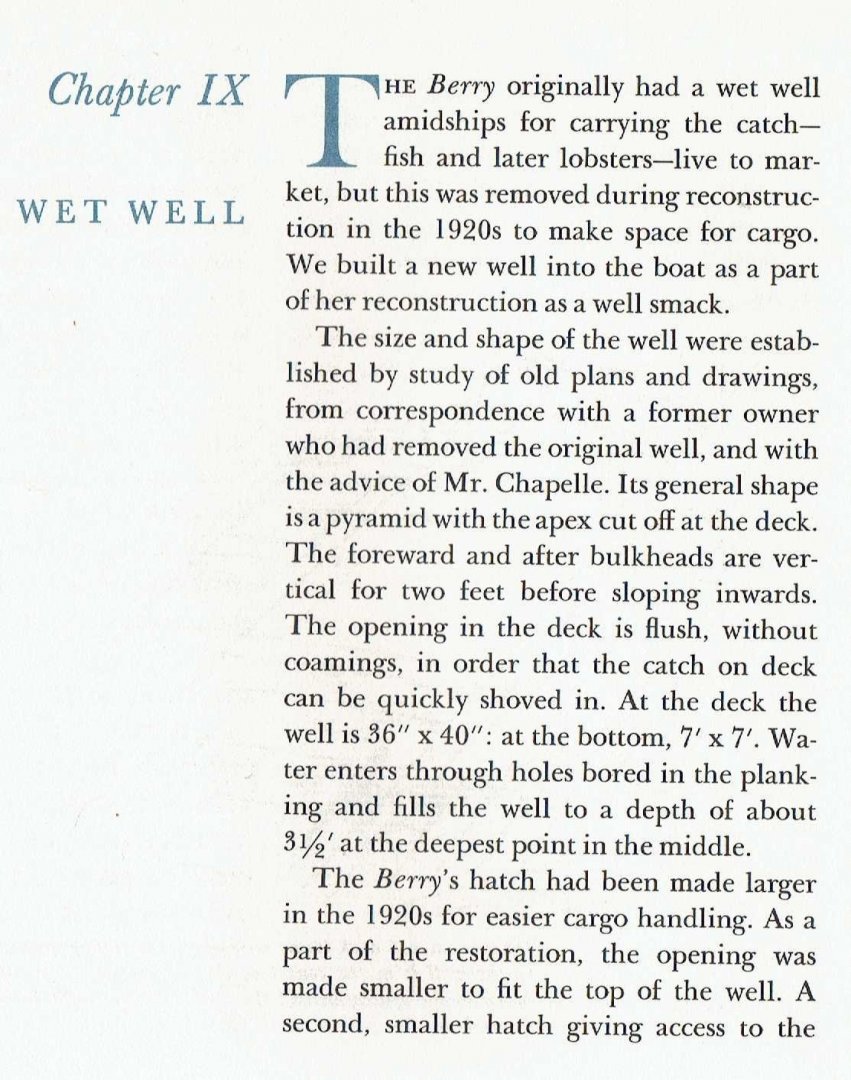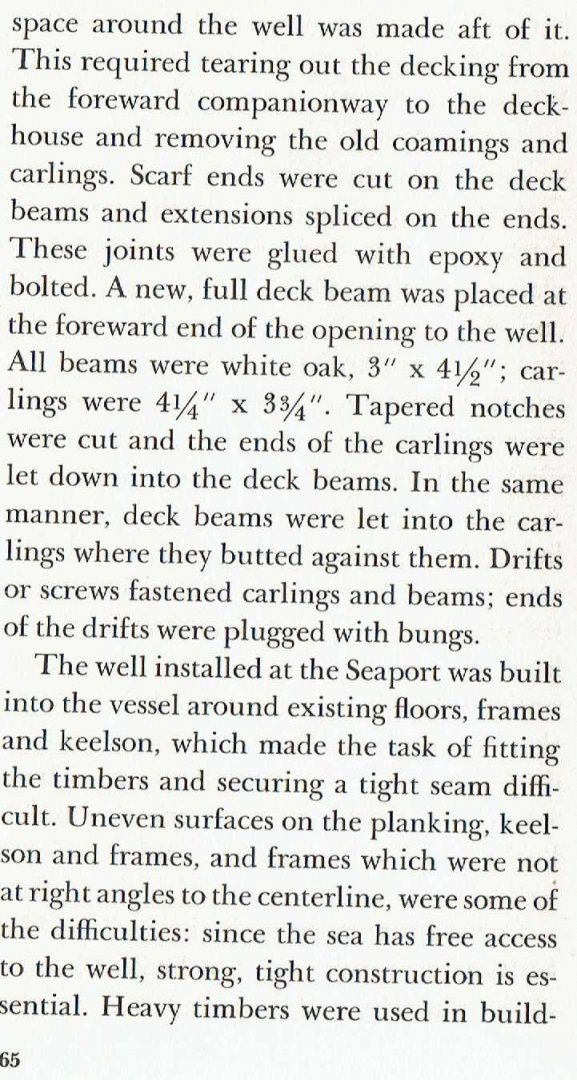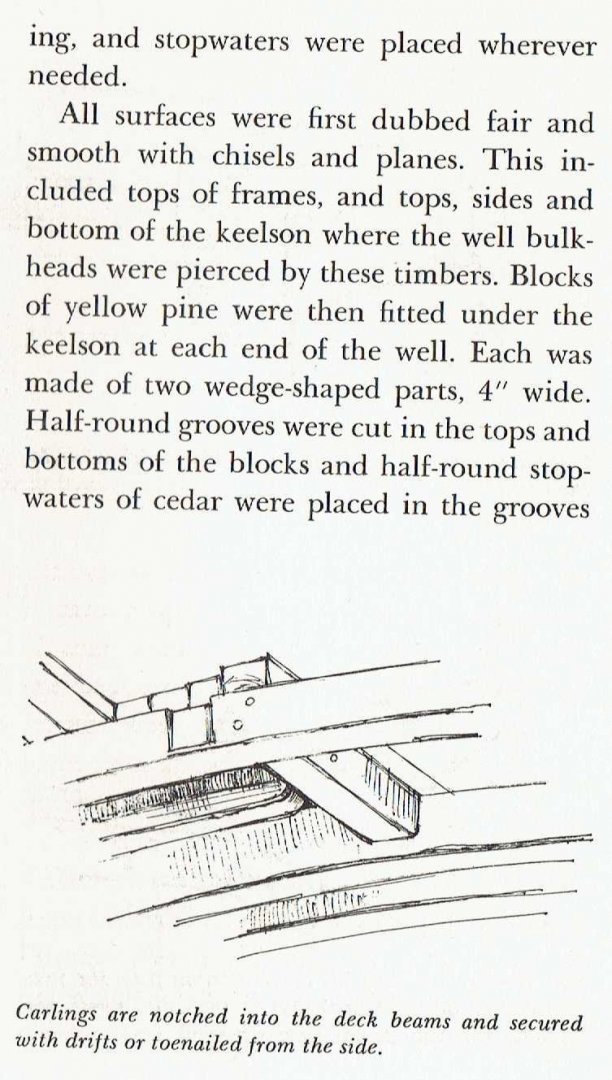-
Posts
3,084 -
Joined
-
Last visited
Content Type
Profiles
Forums
Gallery
Events
Everything posted by Jaager
-
I am trying to discern from your text just what your conditions are. The best that I can come up with is that you are using line supplied by Syren and are trying to change the color. If this is the situation, the line that you are attempting to color is poly/cotton blend threads which is the Syren starting material. The poly component is a synthetic polymer and not affected within its body by a dye - - there is nowhere for dye particles to penetrate. So the cotton takes it up and the poly does not. Some of your change is likely dye particles sloughing off of the plastic. Almost all dyes tend to use color fast material. Plastic can be painted. Dyes are for natural plant based - cellulose - linen and cotton. An experiment that I intend to do is using Liberon Van Dyck Walnut husk dye crystals. Saturated solution for standing and very dilute for running. I have been hording linen yarn for a while. A major regret is that I did not buy a case of each size Cutty Hunk linen fishing line before the survivors of the owner transferred his remaining stock to a dumpster.
-
If you are only going to use it for spars and are not content to use the hand tool - square to octagon etc. method, all that is needed is a motor to turn the stock. If working the stock directly without a tool post or tool rest, a 1/2" drill will turn the stock. Just build a jig to hold the drill on its back. Another jig to hold an upright stick with a ball bearing race can support the distant end. Unlike the sort of small lathe that you are evaluating, which will have a way that is shorter than most masts, a drill jig can have any length of one piece way up to 8 feet. Ball bearing races come in a wide variety of ID and shims can make up the difference.
-

Harold Hahn method
Jaager replied to Essayons's topic in Building, Framing, Planking and plating a ships hull and deck
Except that the waste is two layer "plywood" with some of the layers at 30-45 degrees to each other. This is difficult to use for anything else. It could be soaked in IsoOH to separate the layers I guess - but the scrap is irregular in shape and probably not worth in savings what it would take the rescue it. I did not consider the waste per scale aspect when I framed Kate Cory @1:48, back in 1973. It is obvious, now that @druxey has pointed it out. At the time, I would have used the Hahn method anyway. The alternatives were very complicated. I used Black Walnut and it was inexpensive and easy to get. The waste of 1:48 is 4 times Hahn @ 1:96 @Gaetan Bordeleau @ 1:24 has 4 times the waste of 1:48 as well as starting with thickness of framing stock that is 2x 1:48 and 4x Hahn When Hahn introduced his method, it was easier than the methods used then. The upside down aspect is a choice. It works just as well if not rotated 180 degrees. The plywood jig that holds the extension of the tops is easier to mount and is less likely to bow or twist when secured to the baseboard. The jig wants extensive and precise bracing when hanging in the air. -

Running Rigging Line Color Differences
Jaager replied to Keith Black's topic in Masting, rigging and sails
As far as the running rigging color, I would think it would depend on the story that you are telling. Navy - Just leaving the rigging dock for the first time - depending on the dock stores, all could be from the same lot - uniform color. new rope Merchant - even then I could imagine that differences could happen - chasing a deal, there could be more than one source for rope. Hemp color may not have been uniform - different seasons, different varieties grown by suppliers. Since they probably had to save seed from year to year from themselves, I wonder if there was even a common concept of "variety" yet? Been at sea - the most used lines could have been replaced with new. If only a section was worn, even a single line could have a different color section where a patch was made. -
I would guess that there are more than a few objects from the past that were subjected to the sort of plan that you have for these planes. Then later when the objects came to valued by collectors who place a premium on pristine original condition and patina and such, come across ones that have been 'repaired and improved for use in the modern era' - well the least of their reactions would be to use a photo of the "improve it and use it" as a dartboard. These old tools were probably hand made. Give a thought to backing your ambition to a previous crossroad. Have the originals be plans for you to make complete and exact replicas - using currently available materials - for your use. Or buy the best quality modern versions from commercial sources for your use. Then store the originals under the best stasis chamber conditions that you can manage and leave the restoration to a professional - or apprentice yourself to a professional in restoration before you do it yourself. Who knew that Buxus sepervirens would become a unicorn? Back in 1972 when I started in this - and it was available to buy from hardwood dealers?
-

Is there a Boudriot's 74 Gun Ship in "kit" form???
Jaager replied to Michael Scarborough's topic in Wood ship model kits
Chuck and the other kit suppliers that are mostly anchored here are what I term boutiques. They are in it for the love of it as much as anything else. The quality of the materials and attention to detail are very different from the Europe based kit manufacturers. Glossy pictures of a first rate or third rate and advertising copy that suggests that anyone can build a masterpiece with no more prior knowledge than what is necessary to assemble a plastic kit - usually seductive and the focus is on how wonderful the finished ship will be. These kits have little in common with a kit from a boutique. Model Shipways and Blue Jacket are not exactly boutiques, but their products are quality, It is prudent to take note of their suggestion as to skill level required and to be painfully sober about how you access your skill level. A high volume of sawdust is mostly a part of larger scale scratch POF. IF you become obsessed with milling your own stock from - say 8x4 rough lumber - you will kick yourself if you had a 14" bandsaw and sold it. If you sold a 10" or 12" table saw - that is for the best - enjoy having all of your fingers. An edger would be nice, but it not necessary. I have never found the need to use a router. You will not need a planner with a blade - A Byrnes thickness sander is almost a necessity if you need to produce custom thickness stock. Now that machine generates sawdust! The design has pretty much all of the sawdust going to the cyclone trap in line with absolutely necessary shop vac. The Byrnes table saw needs the vac attached too. And so does the 5" disk sander. Unless you are fabricating your own metal tools, there are only a few jobs for a mill or a lathe to do with a ship model. And most all of those jobs can be done using a 1/2" drill fixed on its back in a jig. -

Is there a Boudriot's 74 Gun Ship in "kit" form???
Jaager replied to Michael Scarborough's topic in Wood ship model kits
A Sane 74 (one of 120 that were built) was ~ 172' x 46' just the main hull @ 1:48 close to 4 feet long and one foot wide. You add spars and it is significantly longer. The Boudriot 74 series started, I think as an anatomy book and not oriented to a modeler. The complete internal detail led some modelers to replicate all of it - as a stunt and to show off. The latter worked too well because now it has become a sort of fad and expectation. Doing the guts along with the rest, that is. To quote Chris Rock: "Sure you can do it, but that doesn't mean that it is a good idea." -

Is there a Boudriot's 74 Gun Ship in "kit" form???
Jaager replied to Michael Scarborough's topic in Wood ship model kits
I thought that you kept a lot of your tools. That you could start with scratch building from the start, Some of us make more of a racket, but it is my perception that kit adherents far out number scratch builders here. So if doing a kit is your goal, you will be in the majority. In that case a reading of the post For Beginners -- A Cautionary Tale may save a misstep. Experience with plastic kits can give you an inaccurate expectation for what a wooden kit supplies - although the laser cut parts of recent kits are narrowing the gap. Except for the finish, a plastic kit tends to be a world unto itself and the instructions reflect this. A wood kit is not assembly so much as it is fabrication of multiple sub components and then assembly of them. Any kit will have much in common with every other kit as far as the skills and techniques used and needed for the fabrication. It is boring and redundant and kinda silly to include those common skills and techniques in every set of kit instructions. Most mfg. tend not to do it. A wooden kit tends to be a small room in a huge structure. To be successful it almost always requires starting small and simple and progressing up with the accretion of skills and knowledge. Then one day you wake up and know you can do any of it. It is possible to start big and learn as you go. This usually means a lot longer time spent on one vessel, stops and starts as you learn to do each interval, having parts that you wish you had done better, or discarding a kit part mistake and replacing it with a scratch built part. A large and complicated subject for a first one can be overwhelming when viewed as a whole and many give up. Starting small helps in being able to see the project as a series of easily done small increments. Even with a scratch project, if you make the mistake of viewing it as one big job, it can make you want to stop and go do something else. -

Is there a Boudriot's 74 Gun Ship in "kit" form???
Jaager replied to Michael Scarborough's topic in Wood ship model kits
Michael, Even if you find one - and there is a "kit" of a Sane 74 @ 1:75 - you don't really want it! Given your skill level - think emoji of pinched nose/bad smell. -

Red Ochre Paint
Jaager replied to starlight's topic in Painting, finishing and weathering products and techniques
ANCRE provided a sheet with color chips for paints from before synthetic pigments were created by the German chemical industry. The paint product that I found that matches is: Winsor & Newton Winton Oil Color Paint, 37-ml Tube, Vermilion Hue Every artist's oil company probably has Vermilion. A 37 ml tube should last a very long time. This is a more sophisticated way to apply color. It is organic solvent based. Bob Cleek @Bob Cleek has written at least one sufficiently detailed description of how to use this system of pigments. From what I have read, the particle size is fine enough to be easily adapted for use in an airbrush as well as brushing. It is a time proven system. If that is a factor with you. The water based acrylic plastic matrix is an on going experiment as far as how it fares over time. -
Allan, I at first thought that the post title was a question. Instead, it is a statement. What professional woodworkers mean by Black Walnut is Juglans nigra . Just what you are displaying. For furniture, rifle stocks, it is a much favored wood. Local to me, a quick search finds it readily available. Premium with little sapwood 8/4 >9.5" wide lists @ $13.00 /BF. For our uses, other than as baseboards and case framing, even this species is less than ideal. It is open pore. It is probably too dark for use on a model. It has a limited range - Eastern US. The European Juglans regia is not as rich in color, but also has the same grain problem. The stuff in mass market kits is probably not any species of Juglans. Likely it is a tropical species of Mahogany with even larger pores, grain that is coarse and brittle and with only a passing glance as far as the color of Black Walnut. It is pretty much wrong in every way for a ship model. Real Black Walnut wood is not the worst species of wood for ship modeling, but it is low on the list. If it is an exotic import for someone who is considering it, much better choices can be made. The husks have commercial value. They are a source for a Walnut shade dye. I think that picking up fermented husks barehanded tends to leave fingers with an interesting color. I think it was The Radio Reader narrating Conrad Richter's The Trees where I heard just how large and formidable were the Black Walnut trees in the Ohio country at the end of the 18th century. Before they were savagely attacked, felled, and mostly burned to open the land to the Sun. An awful waste.
-

Greetings to MSW/NRG Members and All Ships at Sea
Jaager replied to Michael Scarborough's topic in New member Introductions
Welcome aboard. With some new mwmber introductions, I become inspired to put myself at your place and fantasize about what I would consider in your place, but reflecting on the possibilities I have observed. You have a unique and extensive skill set and this offers you a shot at a golden ring level of work, once you have become grounded in the specialized knowledge necessary in understanding what wooden sailing ships were all about. We of identical minds about the possible artistry in all of this. I consider the ultimate examples to be the models from the last 1/3 rd of the 17th century. The following books offer examples: Historic Ship Models of the Seventeenth and Eighteenth Centuries in the Kriegstein Collection Arnold Kriegstein, Henry Kriegstein Seaforth Publishing NAVY BOARD SHIP MODELS 1650-1750 FRANKLIN,JOHN US NAVAL INSTITUTE PRESS ANNAPOLIS, MD 1989 A full 1:48 scale model of these gilded palaces is a major time sink and produces an object that is a Baby Huey when it comes to displaying it. A more miniature scale would remove some of the problems with a larger scale model. The following books show the work of some true artists at miniatures. Most of their work is at 1:192 scale - size that is a world unto itself. I would go a bit larger 1:120. Small enough to display a fleet, but large enough to not drive you crazy with the details. The 1:192 scale appears at first to be 1/4 the size of the original models. but it is actually 1.5% of 1:48 in volume. The 1:120 scale appears to be 40% of 1:48 but a finished model is 6.4% of 1:48 in volume. Not a jewel, but no furniture has to be moved either. SHIPBUILDING IN MINIATURE 2ND ED MCNARRY,DONALD ARCO PUBL INC NEW YORK 1982 SHIPS IN MINIATURE MCCAFFERY,LLOYD PHOENIX PUBL 1988 Building a Moniature Navy Board Model Reed, Phillip Seaforth 2009 Now, about your prior job, I have a question that I involves it. My favorite opera is Khovanshchina - Moussorgsky -Shostakovich completed version. In the 5th act there is a tune sung by Andrei Khovansky. It is only 8 lines, but it is at least as compelling as any in Opera, and I have never it it sung in any recital or male singer's show off set and I am puzzled as to why not? The Blues guys can make a whole thing from working with just 8 lines, why not Opera? -
Painting is not something that have much experience with, but I have been thinking that the reason to sand any layer of paint is to provide tooth for the next layer. I would think that nothing good would come from abrading the final coat, I am guessing that a smooth finish would either require that the consistency of a brushed coat be relatively thin or that an airbrush be used to apply it.
-
I think SeaWatch Books started with the purchase of Pier Books. Pier Books was mostly an agent for other publishers, I think. It was before the Internet, so their inventory was not available for viewing ad lib. SeaWatch Books turned into a publisher, finding authors and producing new titles that have proven to be popular and beneficial in ship modeling. We can only hope that someone friendly to our interests at least picks up the inventory. Better would be if a new owner did additional runs of titles now out of print. A fond wish would be if this theoretical new owner also picked up the publisher torch and using eyes with a new perspective, found new authors for as yet unexplored areas in stick and string. For the whole planet, I wish for this current business school fad of excessive and instantaneous profit as being the only factor that matters to experience a long deserved death and a burial at the back next to the garbage bins. In any case, a potential buyer would have to possess a much more narrow streak of greed than is seen in most business now.
-
Just some thoughts complicate this situation. Two of the divide point categories with sanding media are open coat and closed coat. When sanding wood, relatively large particles are being removed at the beginning and often these particles have sticky or gummy molecules as part of the mix. Open coat has spaces for these particles to be carried away and the 3D zone of the abrasives knife-like edges works better on wood. When working metal, the particles are of a different nature and close coat does a better job. Your epoxy is probably closer to a metal than wood as for what is needed to pare down your surface, so perhaps closed coat should be where you start your choice. You need a quality backing, but a cloth backing may be too stiff - heavy wet-dry paper may work better. It may be useful to view this from more of a broader perspective. You have made what seems to be an ill advised choice in finishing materials. Rather than continue spending unproductive time on a frustrating attempt to recover from this poor choice, punt. If this was a scratch project, the choice would be simple: place the hull on a shelf and start over and make a new one. A kit presents a major fork in the redo road. Fork one: buy a new kit - the potential cost and re-plowing the same furrow sorta means that you should really love the vessel. Fork two: use the kit plans and gather the materials (and tools) to scratch build a new hull. Better wood than the kit supplied stock is one possibility here. The danger here is that the additional skills and perspective gained from jumping from the kit world to the scratch one, could take hold and the much wider world of choice of subject, size of the model, and quality of materials would keep you there.
-

New Member Rock Harris: An Introduction
Jaager replied to rock harris's topic in New member Introductions
Rock, As you have observed there are four major methods for forming a basic hull - at least as far as wooden hulled vessels are concerned. Iron and steel hulls have their own methods and are outside my focus. Solid hull - usually a softer wood like White Pine or Basswood. Some kits still are this. They use a machine that duplicates a pattern. There is no looking at a block of wood while holding a hand full of patterns. A intimidating prospect for a one off model. The Navy wants any models that they would buy to be hollowed out - to reduce the force caused by environment changes. Traditionally, the outside is sealed and painted. If the lines used are to the outside of the planking, the hull could still duplicate planking using a thin veneer of an appropriate species of hardwood. If the lines are inside the planking, planking should match the scantlings. Semi-solid made up of layers . lift method - with the horizontal lift method - the usual way is to duplicate the waterlines - the waterline intervals determine the thickness of the layers. The bulk of the interior is usually removed. ( As with the above: Traditionally, the outside is sealed and painted. If the lines used are to the outside of the planking, the hull could still duplicate planking using a thin veneer of an appropriate species of hardwood. If the lines are inside the planking, planking should match the scantlings. ) Old how to books list the possibility of a vertical lift method using the buttock lines and their intervals for layer thickness. I cannot recall ever seeing a model built in this way. The third lift possibility is the bread and butter method - the stations and their intervals - I have never seen this done using wood layers that are the thickness of the station intervals. POB - actually plank on mold - the transverse members are in no way frames and only the Chinese built wooden vessels with actual bulkheads. The longitudinal vertical support - something often complained about for being curved laterally is a spine. It is not the keel. Depending on the mold intervals and the mold thickness, either one or two layers of planking are required. This method is the dominant way both scratch and kit models hulls are fabricated now per my observation. ( I first saw this method in a small book from Aeropiccola. At the time their models had ridiculously wide intervals between molds. I think they were the first of the kits from European (Italian) manufacturers. My reaction then and now is the same. The method looks ugly, is hideous, and is a total insult to the ship that it is used to duplicate. ) POF - Plank on frame - constructing a hull using either framing that attempts to replicate actual practice as exactly possible ( currently a strong fad here ) or an artistic version or a stylized version of actual framing practice. Following current techniques the time required can be considerable. The worst part as far as time required is lofting timber patterns. The published methods are tedious at best. Two popular ways to avoid this are to only use published monographs that provide patterns for all of the frames in them or for those who have previous CAD experience or an affinity for it, to enter plans data into a 3D CAD program, obtain a virtual hull and eventually extract frame patterns to use on wood. I suspect that 3D CAD is not much of a time saver over doing it 2D on a drawing board. Also, someone who knows would have to show where this was actually used by an individual to frame a wooden hull. The 3D CAD mostly seems to be an end in itself. These are not necessarily the only choices. -
Jimmy, The forum has the potential and demonstrated ability to help with your journey with this hobby as much as can be done, short of one-on-one in person mentoring. Also, lots of opinions here - it helps if you develop a filter. As I read your biography above, it reads as though the hook is not firmly set in you for all this. Given that base, you should proceed with care with your choice of first few projects. When I read Flying Fish, I first thought of my vessel - an 1830's NY pilot schooner - but it is only possible to do it as a scratch build. Model Shipways is an excellent kit manufacturer, even after it evolved from a labor of love by a group of guys in Ft. Lee, NJ. to being bought by another company. Their version of a pilot schooner is Phantom (and Katy). It used to be available at both 1:48 and 1:96 - but now it seems it is only 1:96. It is solid hull and relatively simple - you could do much worse for a first project. But your Flying Fish is a 1:96 extreme clipper. It is also POB. A clipper - except for all the guns - is about as difficult and involved a choice for a first thru fourth project as would be a first - second - or third rate warship. The learning curve can seem near vertical. The complexity when seen as a whole can be overwhelming. A large vessel at a small scale gets you into miniaturist level fabrication. POB is an idiosyncratic and not an intuitive technique for building a hull skeleton. Observation over years here has this combination of factors yielding the same probability of success as a first project as Picket's charge - even with someone who starts with addiction level enthusiasm. Spotting you Model Shipways - they have a new series for beginners (Shipwright Series) that are a more kind way to accrete experience, skills, and confidence. The second vessel in the series is from your region. A down side is that at present, it seems to be loved too much. There are many appropriate paths and projects for a beginning ship modeler. I see the one that you have to hand as requiring a really extraordinary degree of determination and dedication to be a successful first project. These factors to a level that do not allow much room for fun and joy in the doing of it.
-
-
-
-
-
-
-
About us
Modelshipworld - Advancing Ship Modeling through Research
SSL Secured
Your security is important for us so this Website is SSL-Secured
NRG Mailing Address
Nautical Research Guild
237 South Lincoln Street
Westmont IL, 60559-1917
Model Ship World ® and the MSW logo are Registered Trademarks, and belong to the Nautical Research Guild (United States Patent and Trademark Office: No. 6,929,264 & No. 6,929,274, registered Dec. 20, 2022)
Helpful Links
About the NRG
If you enjoy building ship models that are historically accurate as well as beautiful, then The Nautical Research Guild (NRG) is just right for you.
The Guild is a non-profit educational organization whose mission is to “Advance Ship Modeling Through Research”. We provide support to our members in their efforts to raise the quality of their model ships.
The Nautical Research Guild has published our world-renowned quarterly magazine, The Nautical Research Journal, since 1955. The pages of the Journal are full of articles by accomplished ship modelers who show you how they create those exquisite details on their models, and by maritime historians who show you the correct details to build. The Journal is available in both print and digital editions. Go to the NRG web site (www.thenrg.org) to download a complimentary digital copy of the Journal. The NRG also publishes plan sets, books and compilations of back issues of the Journal and the former Ships in Scale and Model Ship Builder magazines.




